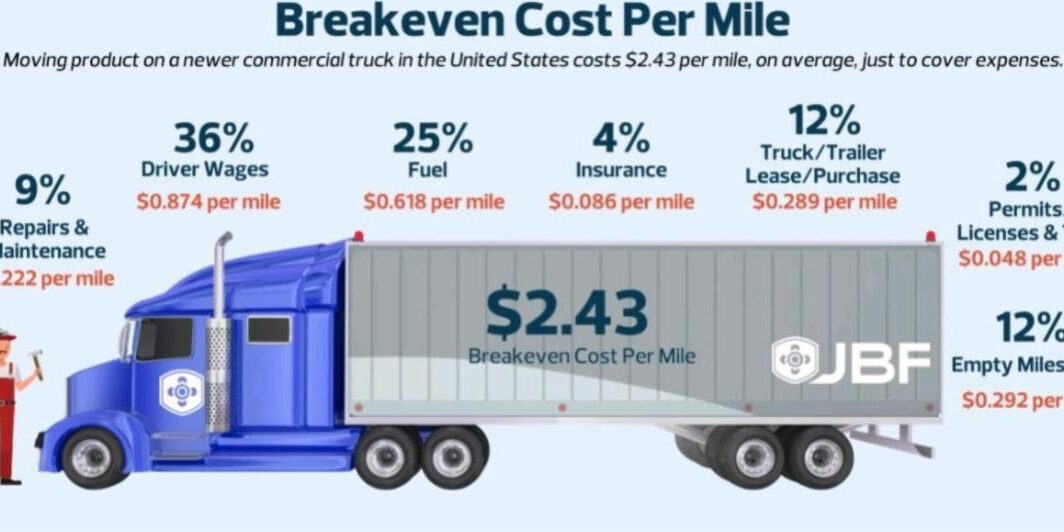In the bustling world of logistical trucking, where the movement of goods is the lifeblood of the industry, ensuring profitability is a critical aspect of success.
One crucial factor that can make or break a trucking company is the rate at which freight work is picked up. Maintaining a break-even rate per mile or higher is of paramount importance, as anything less, especially below $2.43 USD / $3.30 per mile, can spell disaster for the company. In this article, we will delve into the significance of this breakeven average rate and how going below it can lead to the downfall of any logistical trucking enterprise.
Understanding Break-Even Rate
The break-even rate is the minimum rate at which a trucking company must charge per mile to cover all its operational costs and maintain profitability. It encompasses various expenses such as fuel, maintenance, insurance, permits, taxes, driver wages, administrative costs, and more. Falling below this threshold means that a company is operating at a loss, which is simply unsustainable in the long run.
The Dangers of Going Below $2.43 USD / $3.30 CAD per Mile:
$2.43 USD / $3.30 CAD per mile represents the average break-even rate for many logistical companies. While this number may vary based on factors such as fleet size, geographical location, and specific operational costs, it serves as a benchmark to understand the implications of charging below the break-even point.
1. Insufficient Revenue:
When a trucking company accepts freight work for less than $2.43 USD / $3.30 CAD per mile, it fails to generate sufficient revenue to cover its operational expenses. This revenue shortfall eventually leads to a negative cash flow, making it increasingly difficult for the company to meet its financial obligations and invest in critical areas such as fleet maintenance and expansion.
2. Inadequate Maintenance and Upkeep:
Trucks are the backbone of the logistical trucking business. They require regular maintenance, repairs, and upgrades to ensure safety, efficiency, and compliance with regulations. When a company operates at rates below the break-even point, it becomes challenging to allocate adequate funds for necessary maintenance, leading to increased breakdowns, decreased reliability, and potential safety risks.
3. Reduced Driver Compensation:
Skilled and experienced drivers are vital assets for any trucking company. By accepting loads below the break-even rate, companies inadvertently compromise driver compensation. Lower rates often result in reduced wages and fewer incentives, which can demotivate drivers and lead to higher turnover rates. Losing valuable drivers not only incurs recruitment and training costs but also affects the overall performance and reputation of the company.
4. Quality and Reliability Concerns:
Operating below the break-even rate may lead to a decrease in service quality and reliability. In an attempt to cut costs, companies may be forced to take on more loads to compensate for lower rates, resulting in increased pressure on drivers, longer working hours, and higher risks of delays and accidents. This can negatively impact customer satisfaction and lead to the loss of valuable business relationships.
5. Inability to Invest and Innovate:
Profitability is essential for growth and innovation within the trucking industry. By operating at rates below the break-even point, companies find themselves in a constant struggle to merely survive, leaving little room for investment in modern technologies, training programs, fleet expansion, or improving operational efficiency. This hampers the company’s ability to adapt to industry advancements and seize new opportunities.
The logistical trucking business is a highly competitive and complex industry, where maintaining profitability is crucial for long-term success. Picking up freight work at a break-even rate per mile or higher is a vital strategy to ensure that operational costs are covered, drivers are fairly compensated, maintenance is prioritized, and the overall quality of service is maintained.





